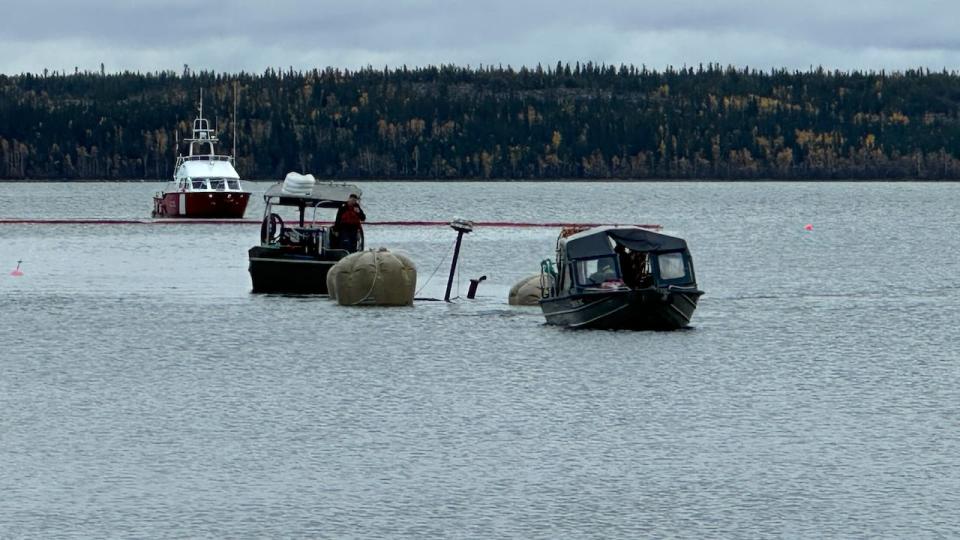The Canadian Coast Guard carried a sunken angling vessel out of Yellowknife’s Back Bay on Thursday– a logistical process the federal government firm claims it’s spending for, nevertheless is not going to but state simply how a lot.
Neil Woledge, a Yellowknife man, previously knowledgeable CBCNews he owns the 40-foot steel vessel He claimed he would definitely left it out on the water for two winters months with out case, nevertheless that drawback struck this second round. A spill file submitted to the N.W.T. federal authorities claimed it dropped larger than 4 months again, on May 12.
Robert Brooks, the shoreline guard’s nationwide supervisor for aquatic ecological and risks response, claimed Thursday that it had really employed a gaggle of knowledgeable scuba divers together with a crane enterprise to assist increase the vessel.
The shoreline guard previously claimed it was having a tough time to find service suppliers to assist.
Brooks claimed the recuperation technique entailed evaluating the architectural stability of the watercraft, drifting it to the floor space of the water, and making use of cranes to lift it onto a barge so perhaps eliminated.


A set of 4 gray blow up balloons is perhaps seen drifting on the floor space of the water. In in between them, 2 pipelines jabbed up and out of the water– an indicator that the vessel had really been raised to the floor space. Two working watercrafts hauled the entire gear close to the shoreline, the place it was after that raised by a crane. (Travis Burke/ CBC)
From the Giant Mine watercraft launch on Thursday, a group of 4 gray blow up balloons is perhaps seen drifting on the floor space of the water. In in between them, 2 pipelines jabbed out of the water– an indicator that the vessel had really been raised to the floor space.
Two working watercrafts hauled the entire gear close to the shoreline, the place it was after that raised by a crane.
Brooks claimed as quickly because the vessel ran out the water, it might actually be required to a protected place removed from coast and examined for restore work– which the proprietor would definitely spend for– or securely taken aside and thrown away.
Coast Guard not inserting price on cleansing but
A speaker for the shoreline guard previously knowledgeable CBC News that the federal government firm was spending for the cleansing. On Thursday, Brooks would definitely not state simply how a lot it was mosting more likely to set you again.
He claimed the speed was “still being tabulated” which it might actually be “premature” to state simply how a lot it might actually be. He likewise wouldn’t give a harsh value quote of the expense, or state simply how a lot the service suppliers have been being paid.
A speaker for the shoreline guard previously knowledgeable CBC News in an e-mail it’d lay a penalty beneath the Wrecked, Abandoned and Hazardous Vessels Act, nevertheless that it had really picked to not. They likewise claimed the vessel proprietor was “unable to address the problem vessel.”
Pollution elements to contemplate
After the angling watercraft sunk, the Canadian Coast Guard put a management growth across the vessel and made use of sorbents– a cloth that accumulates oil particles– to help with the tidy up.
Brooks claimed the placement was saved a watch on regularly later, to make sure the growth was functioning successfully.
“We were able to really keep a safe environment,” he claimed.

